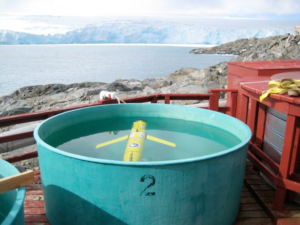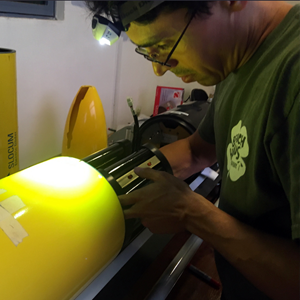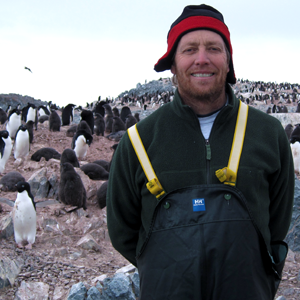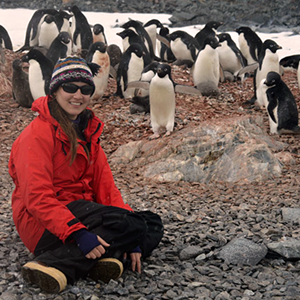Autonomous Underwater Vehicles
Group PI: Oscar Schofield

Rutgers University’s Coastal Ocean Observation Lab (RU COOL) first deployed an Autonomous Underwater Vehicle (AUV) in Antarctica during the January 2007 LTER cruise. Since then, AUVs (in particular Slocum gliders) have been incorporated as a regular component of the LTER sampling regime. The Antarctic glider fleet is comprised of two coastal (traveling to depths of about 100 meters) and one deep (traveling up to depths of 1,000 meters) glider. All of the gliders have a basic scientific payload that measures salinity and temperature. Additional sensors such as backscatter meters, a fluorometer, an oxygen sensor (to name a few) can be added to any of the gliders.

Currently, two gliders are based out of Palmer Station. The gliders are controlled and monitored by the staff and students (including undergraduates) of RU COOL in New Jersey. The glider pilots in New Jersey use the Iridium satellite network to communicate directly with AUVs in the Antarctic. Initially, the gliders are collecting data that tells RU COOL scientists about the salinity, temperature, bio-optics, and surface currents near Palmer Station. These data are important because one of these two gliders is surveying a nearby submarine canyon responsible for upwelling nutrient – rich water. This nutrient – rich water is responsible for causing phytoplankton blooms. In turn, such blooms provide the foundation for the local ecosystem which has seals and penguins as apex predators. Collecting data about the upwelling from the submarine canyon will allow scientists to test various food – web interaction hypotheses. The other glider based at Palmer Station is the deep glider that travels along the Western Antarctic Peninsula from Palmer Station to the British Antarctic Survey’s Rothera Station each year. The third glider is used on the annual LTER cruise in January. This third glider provides data ahead of the ship’s track. The data from the glider is analyzed and allows for adaptive sampling of the LTER sampling grid. The introduction of underwater gliders as an annual component of the Antarctic LTER has improved our spatial and temporal sampling resolution.
Team Members
Recent Articles
(coming soon)





 This site was developed with the support of the National Science Foundation under Grant No. OPP-2224611 and OPP-2026045. Any opinions, findings, and conclusions or recommendations expressed in this material are those of the authors and do not necessarily reflect the views of the National Science Foundation.
This site was developed with the support of the National Science Foundation under Grant No. OPP-2224611 and OPP-2026045. Any opinions, findings, and conclusions or recommendations expressed in this material are those of the authors and do not necessarily reflect the views of the National Science Foundation.